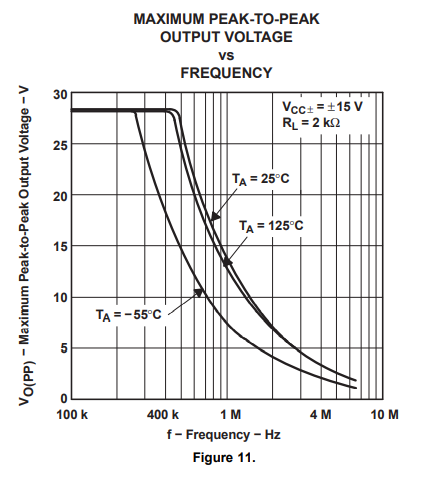If the 330µH inductor has a high enough self-resonance frequency and does not begin to behave as a capacitor at 600kHz, then its impedance will be pretty high and with 4.2Vpp at the input it should limit output current to a very reasonable +/- 1.7mA. So it's not an output current problem.
The opamp is used at a relatively high frequency compared to its gain bandwidth product: it has 6MHz GBW, so at 600kHz, only an open loop gain of 10 (20dB) remains to correct nonlinearities. From the internal schematic, internal compensation doesn't seem to wrap around the output stage, so only global feedback can reduce distortion in the output stage. However, the amount of feedback that counts towards reducing a certain distortion harmonic does not depend on the open loop gain at the fundamental frequency, but at the frequency of the harmonic in question. So, for example, to correct harmonic 2 at 1.2MHz, it loses 6dB of feedback, leaving only 5 (14dB). And for harmonic 4, only 8dB of feedback remains.
As frequency increases, crossover distortion will increase too, and feedback available to correct it is reduced. If the output stage is not included in the compensation, this causes a sharp rise in THD at high frequency, as shown by the datasheet:

This is in agreement with your measurement: due to the inductor, current is shifted by almost 90°, so the output stage crossover will occur on the peaks of the output voltage waveform, right where a kink appears on your output voltage. The output stage is not symmetrical, and both sides will switch at different speeds, so it is not surprising the distortion is not symmetrical and only occurs on one polarity of the signal.
Distortion should rise sharply with output current, so you should be able to adjust the input voltage and find the point where it pops up.
Basically, if you want low distortion on a signal, the opamp needs to have enough feedback remaining at the harmonic frequencies to be suppressed, which means it needs GBW much higher than the input frequency. A symmetrical linear output stage that generates little distortion to begin with is also a plus. Most "oldschool" rail to rail topologies will not work for this, but recent rail to rail outputs which wrap the compensation around the output stage can have excellent performance.









